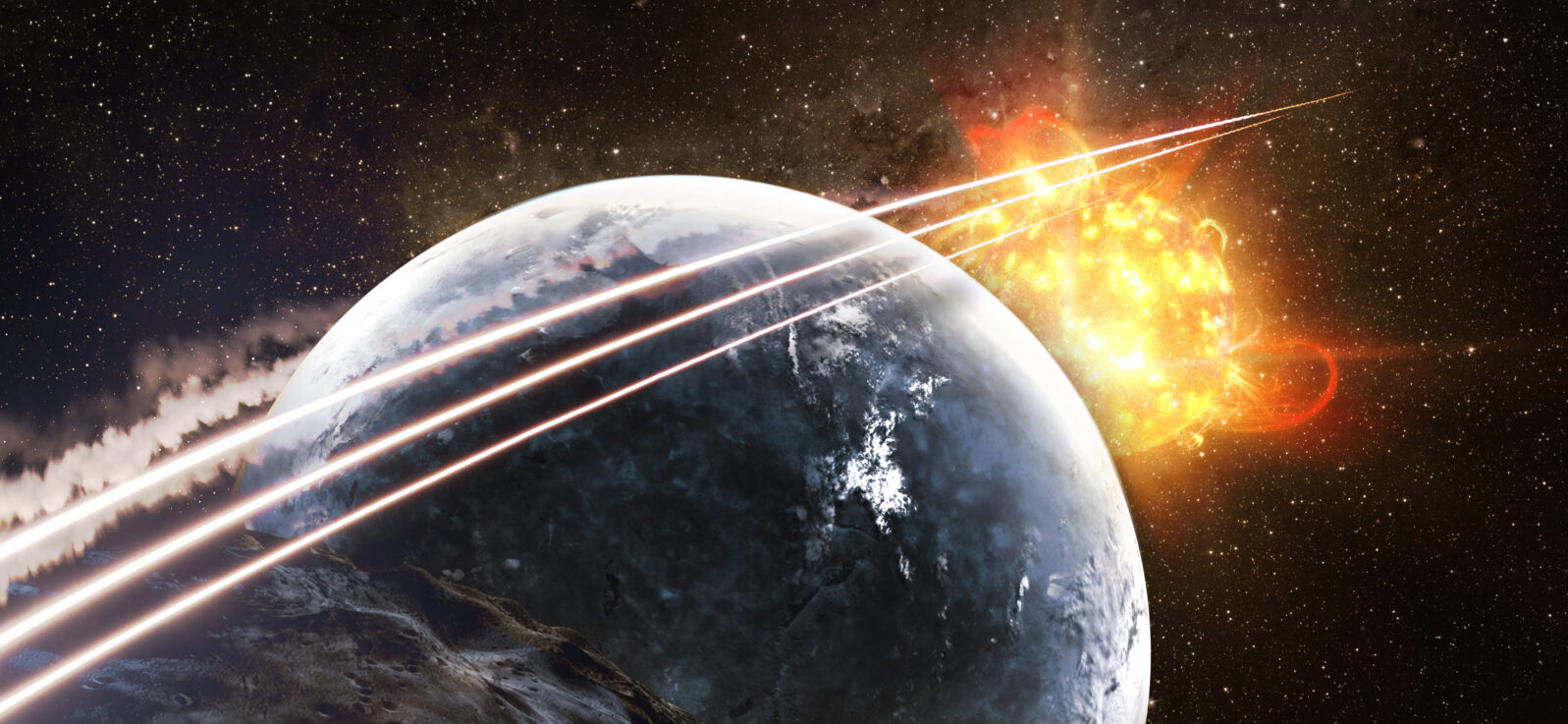What Would Happen If We Traveled at 2x the Speed of Light?
We can’t reach the speed of light just by speeding things up, let alone exceed it. But are there other ways?Recently, a 13-year-old in Mumbai asked philosopher of mathematics Sam Baron what would happen if someone were to move — hypothetically — at twice the speed of light. Baron replied,
As far as we know, it’s not possible for a person to move at twice the speed of light. In fact, it’s not possible for any object with the kind of mass you or I have to move faster than the speed of light.
Sam Baron, “Curious Kids: what would happen if someone moved at twice the speed of light?” at The Conversation (May 24, 2022)

He explains why not as follows,
To accelerate an object with mass, we have to add energy. The faster we want the object to go, the more energy we’ll need.
The equations of relativity tell us that anything with mass – regardless of how much mass it has – would require an infinite amount of energy to be accelerated to the speed of light.
But all of the sources of energy we know of are finite: they are limited in some respect.
Sam Baron, “Curious Kids: what would happen if someone moved at twice the speed of light?” at The Conversation (May 24, 2022)
So. apart from an astonishing energy breakthrough, we are just not going that fast. But here is where it gets interesting:
However, for certain strange particles, traveling at twice the speed of light might be possible – and it might send those particles back in time…
There are … hypothetical particles called tachyons with a special kind of mass called “imaginary mass”.
There is no evidence tachyons exist. But according to relativity, their possible existence can’t be ruled out.
If they do exist, tachyons must always be traveling faster than the speed of light. Just as something with ordinary mass can’t be accelerated past the speed of light, tachyons can’t be slowed down to below the speed of light.
Some physicists believe that if tachyons exist, they would constantly be traveling backwards in time. This is why tachyons are associated with time travel in many science fiction books and movies.
Sam Baron, “Curious Kids: what would happen if someone moved at twice the speed of light?” at The Conversation (May 24, 2022)
At Space.com, we hear of a another wrinkle:
Although the speed of light is often referred to as the universe’s speed limit, the universe actually expands even faster. The universe expands at a little more than 42 miles (68 kilometers) per second for each megaparsec of distance from the observer, wrote astrophysicist Paul Sutter in a previous article for Space.com. (A megaparsec is 3.26 million light-years — a really long way.)
Vicki Stein, “What is the speed of light?” at Space.com (January 21, 2022)
So the universe’s expansion technically exceeds the speed of light because it is expanding in all directions. If you add the speeds in opposite directions together (speed of opening), you get a higher overall number.
Baron also offers an imaginative scenario at Gizmodo for what would happen if we found a wormhole:
A wormhole is a shortcut between any two points in space. While a star might be 4.5 light years away in normal terms, it might only be a few hours away via a wormhole.
If there are any actual wormholes, they would let us travel great distances in a very short period of time – allowing us to get to the farthest reaches of the universe within a single lifetime.
Unfortunately, like tachyons, wormholes remain entirely hypothetical.
Sam Baron, “If We Moved at Twice the Speed of Light Would We Slip Into the Multiverse?” at Gizmodo Australia (May 28, 2022)
While wormholes, like tachyons, are hypothetical, accepted physics theory does allow for them in the way that it does not allow for more conventional methods of exceeding the speed of light.
At Space.com, Vicki Stein suggests, “One proposed idea involves a spaceship that could fold a space-time bubble around itself. Sounds great, both in theory and in fiction.” Because
”If Captain Kirk were constrained to move at the speed of our fastest rockets, it would take him a hundred thousand years just to get to the next star system,” said Seth Shostak, an astronomer at the Search for Extraterrestrial Intelligence (SETI) Institute in Mountain View, California, in a 2010 interview with Space.com’s sister site LiveScience. “So science fiction has long postulated a way to beat the speed of light barrier so the story can move a little more quickly.”
Vicki Stein, “What is the speed of light?” at Space.com (January 21, 2022)
Warp drives, such as Kirk and Spock had, are theoretically possible, according to theoretical physicists:
In short, the speed of light is an insurmountable barrier if the proposal is to use energy to drive objects that have mass to surpass it. But that is not a law of nature. Methods may well be found one day that do not require the use of energy in that way. We shall see.
You may also wish to read: Can we teleport? Find a wormhole? Survive the universe’s death? Many ideas, once thought science fiction, have become science fact. How will these ones fare? Teleporting, for example, works for quantum particles but it might require a galaxy’s worth of energy to transport a human being. Not quite like Star Trek.
